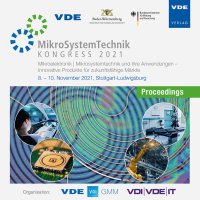Silver sintering: New Materials for die and substrate attach in high power applications
Conference: MikroSystemTechnik Kongress 2021 - Kongress
11/08/2021 - 11/10/2021 at Stuttgart-Ludwigsburg, Deutschland
Proceedings: MikroSystemTechnik Kongress 2021
Pages: 3Language: englishTyp: PDF
Authors:
Rabay, Battist (Nano-Join GmbH, Berlin, Germany)
Papathanasiou, Niklas (sglux SolGel Technologies GmbH, Berlin, Germany)
Abstract:
The developments in electronics and microtechnology are characterized by increasing miniaturization and a growing complexity of components. The results are higher power density and thus an increase of the operating temperature of electrical components. Silver sintering is on the rise. The need for more reliable and better performing interconnects in power- and opto-electronics pushes the limits of the state-of-the-art interconnection materials.Soldering based on Tin or using Silver-epoxy-materials is becoming the bottle-neck in terms of heat dissipation, electrical resistance, re-melting, and reliability. Furthermore, due to the trend of miniaturization, growing power densities and switching to SiC and GaN as semiconductor materials challenges Sn-based soldering up to its physical restrictions. In all cases either the interconnect between the semiconductor and the substrate or the substrate attach itself plays a crucial role for the efficiency, the thermal performance and reliability of these components. Silver sintering solves all of the above-mentioned problems. Of course, there is a downside: Generating reliable interconnects with a simple process as soldering is, challenges the manufacturer of silver pastes. Here, sintering with pressure is an established process, which yields to good interconnects based on silver. But, setting up a pressure of 22 MPa is only applicable for some components and surface areas. In addition, manufacturers tend to avoid the high costs of new production lines which are capable of pressure sintering and wait for solutions which are easy to implement in their already existing infrastructure: pressureless sintering. The drawback of current solutions for pressureless sintering, apart from the complicated handling and storage at reduced temperatures, is that they only work reliably for surface areas below 20 mm2, and even though you have a good mechanical stability of the interconnect, the conductivity is only slightly improved in comparison to Sn-based solder.


